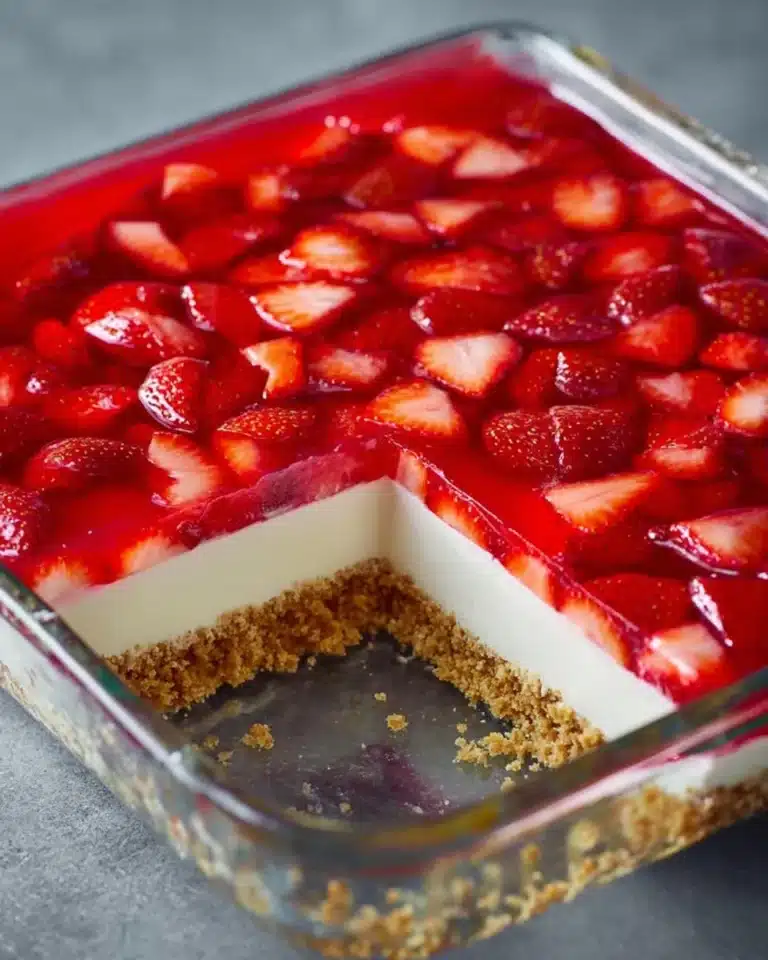If you’ve ever wished to taste a quintessential Pakistani dessert that vibrates with color, aroma, and a touch of nostalgia, the Zarda (Pakistani Sweet Rice) Recipe is your golden ticket. This delightful dish turns simple ingredients into a blissful symphony of saffron-hued rice, fragrant spices, and rich nuts stirred into a luscious, lightly sweetened treat. Perfect for celebrations or whenever you crave that homely, sweet comfort, Zarda charms with every mouthful and reconnects you with traditional flavors that feel timeless yet fresh.
Ingredients You’ll Need

Every great dish starts with the right ingredients, and for Zarda, simplicity is key. Each element plays a vital role: from the aromatic spices that infuse warmth, to the textures of nuts and raisins that add delightful surprises. Together, they create the perfect harmony of taste and color that this Pakistani sweet rice is famous for.
- 2 cloves: provide a warm, spicy undertone to balance the sweetness.
- 1 star anise: adds a subtle licorice flavor that’s captivating.
- ¼ tsp salt: enhances all the flavors and keeps the sweetness from becoming too overpowering.
- 1 cup sella rice: this parboiled rice holds its shape and soaks up syrup beautifully.
- ¼ tsp orange food color: traditional to give the rice its signature vibrant hue.
- 2 tbsp ghee (or unsalted butter): for that rich, buttery base that carries flavors seamlessly.
- 3 green cardamom pods: these sweet, floral pods amplify the aroma.
- 1 cup white fine granulated sugar: sweetens without graininess, forming a glossy coating.
- 3 tbsp whole milk: tenderizes the rice and enriches the syrup.
- 2 tbsp raisins: burst of juicy sweetness in every bite.
- 2 tbsp almonds (blanched and peeled): crunchy texture and nutty undertones.
- 2 tbsp pistachios (unsalted): a pop of green and buttery crunch.
- 2-3 tbsp dried coconut: adds chewiness and a lovely tropical hint.
- Dried coconut, pistachios, almonds (sliced): for garnish to make it visually stunning.
- Khoya (or mawa): rich creamy topping that melts into the warm rice.
- Edible silver leaf: traditional touch that makes it festive and elegant.
You’ll find the full ingredient list, instructions, and print option in the recipe card below.
How to Make Zarda (Pakistani Sweet Rice) Recipe
Step 1: Prep and Soak the Rice
Start by washing your sella rice thoroughly until the water runs clear—this removes excess starch and keeps the grains fluffy. Then soak the rice in lukewarm water for 2–3 hours; this step softens the grains and ensures even cooking later on.
Step 2: Spice-Infused Rice Cooking
Bring about 1.5 liters of water to a roaring boil and add in cloves, star anise, and salt. These whole spices gently perfume the water and, in turn, the rice. Add the drained soaked rice and the orange food color, allowing the grains to absorb the warm hues and start cooking. Let this simmer on medium heat until the rice is about 90% done—around 6 to 8 minutes.
Step 3: Drain and Cool the Rice
Drain the rice in a colander and rinse with cold water. This crucial step stops the cooking instantly so you don’t end up with mushy rice; it also helps lock in the brilliant orange color.
Step 4: Preparing the Sweet Syrup Base
In a large wok or heavy pan, melt ghee over medium heat. Toss in green cardamom pods and toast them until their fragrance fills the air. Then stir in the sugar and milk, making sure the sugar dissolves fully without crystallizing—this smooth syrup will lightly coat the rice for even sweetness.
Step 5: Combining Rice and Syrup
Pour the parboiled rice gently into the syrup mixture and fold carefully so every grain is glistening without breaking. Turn up the heat to medium-high and cook for several minutes until most of the liquid evaporates. The rice should be moist but not swimming in syrup.
Step 6: Adding Nuts, Fruits, and Final Steaming
Sprinkle in pistachios, blanched almonds, raisins, and dried coconut—these add beautiful bursts of texture and flavor. Reduce the heat to the lowest setting, cover the pot, and let the sweet rice steam (‘dum’) for 10 to 12 minutes. Using a metal trivet underneath prevents sticking and creates gentle even heat perfect for this final tenderizing step.
Step 7: Final Touch and Fluffing
Once done, uncover and fluff the rice gently with a fork or spatula. Let it rest uncovered for 8 to 10 minutes so excess moisture evaporates and the flavors settle, resulting in perfectly tender, aromatic grains.
Step 8: Serving and Garnishing
Transfer your gorgeous Zarda to a beautiful dish. Top generously with extra dried coconut, sliced pistachios, almonds, creamy khoya, and a delicate shimmer of edible silver leaf—a feast for the eyes and the soul.
How to Serve Zarda (Pakistani Sweet Rice) Recipe

Garnishes
Garnishes are not just decoration but a flavor amplifier for this sweet rice. The sliced almonds and pistachios lend crunch, the dried coconut adds subtle chewiness, and a dollop of khoya introduces creamy richness. Edible silver leaf transforms this humble dessert into an elegant celebration star.
Side Dishes
Zarda pairs beautifully with mild-flavored dishes that balance its sweetness, such as fragrant biryanis, spiced grilled meats, or lightly curried vegetables. For a refreshing contrast, serve with plain yogurt or a cool raita infused with cucumber and mint.
Creative Ways to Present
Think beyond the serving bowl—try layering Zarda in individual glass cups with nuts and rose petals for a stunning presentation at dinner parties. You can use mini molds for bite-sized portions or even shape the rice into decorative mounds with your hands for a rustic, charming look.
Make Ahead and Storage
Storing Leftovers
Zarda keeps well in an airtight container in the refrigerator for up to 3 days. The flavors mellow and meld beautifully overnight, making leftovers even more delightful. Just be sure to keep the garnishes separate if you want to maintain their crunch.
Freezing
Freeze portions of cooled Zarda in freezer-safe containers for up to 1 month. When you’re ready, thaw overnight in the fridge. Freezing is a wonderful option if you want to prepare this celebratory dessert in advance for festive occasions.
Reheating
Reheat gently on the stove or in the microwave with a splash of milk to revive the creamy texture. Stir occasionally and cover to warm evenly. Avoid overheating as that can cause the rice to dry out or become tough.
FAQs
What is Sella Rice and can I substitute it?
Sella rice is parboiled rice known for its firm texture and the ability to absorb flavors without breaking apart. You can try basmati rice as a substitute, but sella rice is preferred for authentic texture and color retention in Zarda.
Can I make Zarda vegan?
Absolutely! Replace ghee with coconut oil or vegan butter, and substitute milk with almond or oat milk. The flavor and texture will be slightly different but still delicious and comforting.
Is the orange food color necessary?
The orange food color provides the traditional bright hue that makes Zarda visually striking. If you prefer, you can skip it or substitute with natural colors like saffron infused milk to achieve a subtle yellow tint.
How sweet is Zarda supposed to be?
Zarda is moderately sweet — the balance of sugar, nuts, and aromatic spices creates a sweet yet nuanced dessert, not overly sugary. You can always adjust the sugar quantity when making it to suit your taste.
Can I add other dried fruits to Zarda?
Yes! You can include dried apricots, cherries, or even chopped dates to add different textures and flavors. Just be mindful of the overall sweetness when adding extra dried fruits.
Final Thoughts
I hope this vibrant and heartwarming Zarda (Pakistani Sweet Rice) Recipe inspires you to bring a slice of Pakistani tradition to your table. With its rich aroma, festive colors, and comforting sweetness, it’s a dessert that wraps you in joyful memories and makes every celebration even more special. So go ahead, try it out, and let this delightful sweet rice bring a sparkle to your next meal!
PrintZarda (Pakistani Sweet Rice) Recipe
Zarda is a traditional Pakistani sweet rice dish that combines aromatic spices, colorful food coloring, and a mix of nuts and dried fruits. This fragrant and luscious dessert features sella rice cooked in spiced water, then infused with a syrup of sugar, ghee, and milk, and finally steamed to perfection with added textures of raisins, almonds, pistachios, and dried coconut. Garnished with khoya and edible silver leaf, Zarda is a festive and celebratory treat commonly enjoyed during special occasions.
- Prep Time: 10 minutes
- Cook Time: 25 minutes
- Total Time: 35 minutes
- Yield: 4 servings
- Category: Dessert
- Method: Stovetop
- Cuisine: Pakistani
Ingredients
Spices and Rice
- 2 cloves
- 1 star anise
- 3 green cardamom pods
- ¼ tsp salt
- 1 cup sella rice
- ¼ tsp orange food color
Sweeteners and Fats
- 2 tbsp ghee (or unsalted butter)
- 1 cup white fine granulated sugar
- 3 tbsp whole milk
Nuts and Fruits
- 2 tbsp raisins
- 2 tbsp almonds (blanched and peeled)
- 2 tbsp pistachios (unsalted)
- 2–3 tbsp dried coconut
For Garnish
- Dried coconut
- Pistachios (sliced)
- Almonds (sliced)
- Khoya (or mawa)
- Edible silver leaf
Instructions
- Soak the rice: Wash the rice thoroughly until the water runs clear. Soak the rice in lukewarm water for 2 to 3 hours to soften it for cooking.
- Prepare spiced boiling water: In a large pot, bring 1.5 liters of water to a boil. Add cloves, star anise, and salt to infuse the water with aromatic spices.
- Cook the rice: Add the soaked rice along with the orange food color to the boiling spiced water. Cook over medium heat for 6 to 8 minutes until the rice is about 90% cooked.
- Drain and rinse: Strain the rice through a colander and rinse with cold water to stop further cooking. Set aside to drain.
- Toast cardamom in ghee: Heat ghee in a large wok or heavy-bottomed pan over medium heat. Add green cardamom pods and toast for about 30 seconds until fragrant.
- Make sugar syrup: Add sugar and milk to the pan, stirring continuously until the sugar dissolves completely. Be careful to avoid sugar crystallization.
- Add cooked rice: Immediately add the cooked rice to the syrup and gently mix to coat all the rice grains evenly.
- Cook off excess liquid: Increase the heat to medium-high and cook the mixture for 2 to 3 minutes, stirring occasionally, until most of the liquid evaporates, leaving the rice moist but not watery.
- Add nuts and dried fruits: Sprinkle pistachios, dried coconut, blanched almonds, and raisins evenly over the rice.
- Steam on low heat (dum cooking): Reduce heat to the lowest setting. Cover the pot and let the rice steam for 10 to 12 minutes to fully absorb flavors and cook through. Use a metal trivet or tawa underneath the pot to prevent sticking or burning.
- Fluff and rest: Uncover the pot and gently fluff the rice with a fork or spatula. Let the rice rest uncovered for 8 to 10 minutes to allow moisture to evaporate and flavors to settle.
- Garnish and serve: Transfer the zarda to a serving dish. Garnish with extra dried coconut, sliced pistachios, sliced almonds, khoya, and edible silver leaf. Serve warm and enjoy this colorful, flavorful dessert.
Notes
- Use sella rice (parboiled rice) for the best texture and absorbency.
- Orange food coloring is traditional but can be adjusted or omitted for natural alternatives.
- Soaking the rice helps achieve perfectly cooked grains without mushiness.
- Keep stirring the sugar syrup to prevent crystallization for a smooth consistency.
- Steaming the rice on a low flame (dum) with a trivet protects against burning and promotes even cooking.
- Khoya or mawa adds richness but can be omitted for a lighter version.








